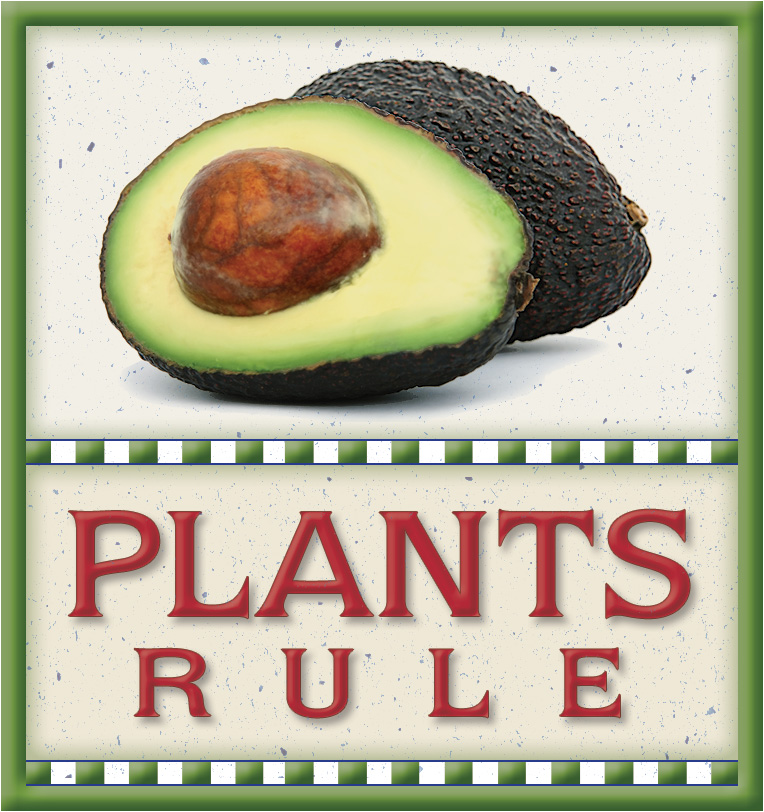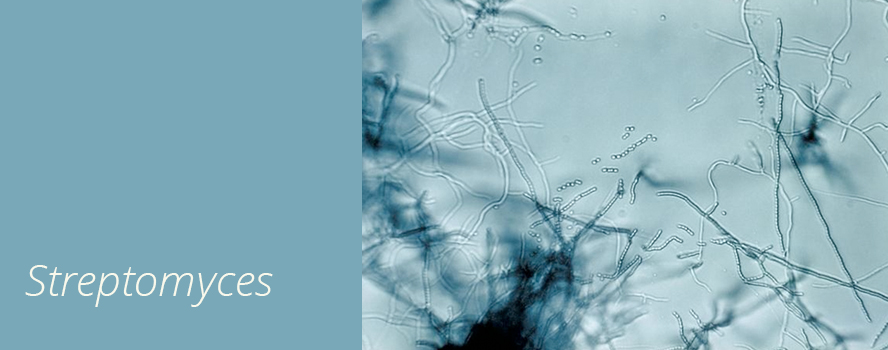Photo by CDC/Dr. David Berd
Streptomyces, Antibiotics, and Microbial Conflict in the Soil
by Helga George, Ph.D.
While competing against other microorganisms, Streptomyces strains have produced many of the antibiotics known to humans.
While the ground you step on may seem like dirt, it is really a complex ecosystem composed of billions of microorganisms competing against each other for nutrients derived mostly from decaying plant material. One group of microbes that is highly adapted to the competitive environment of moist, alkaline soils are Gram-positive, filamentous bacteria known as the Actinomycetes. One common genus in this group is Streptomyces. These bacteria are known for producing a number of antibiotics, many of them clinically useful, that help compete against other microorganisms in the soil.
Actinomycetes can Produce Visible Zones of Antibiotics on Agar Plates
Previously, the first step in isolating Actinomycetes was to plate out soil on agar containing chitin, a component of fungal cell walls. Including this compound helps to select for these organisms over fungi and other types of bacteria. Colonies that made antibiotics could be detected by the clear zone surrounding them. This is the same principle by which Fleming discovered penicillin. These days, PCR-based sequencing experiments are used to distinguish Actinomycete members in the soil.
One can often tell the presence of Actinomycetes by an earthy smell reminiscent of being in a forest. The smell has been found to be due to the production of the compound geosmin, along with other natural products. That earthy smell can strike fear into the hearts of those working with cultures of fungi on agar plates or slants. Mites that eat fungi can crawl onto the agar, dragging with them assorted microorganisms. The mites frequently introduce Actinomycetes into formerly pure fungal cultures. That smell is a warning to mycologists, plant pathologists, or molecular biologists working with fungi that their cultures have been contaminated.
Natural Products and the Ecology of Streptomyces
The production of a number of toxic natural products by Streptomyces isolates was long thought to be a competitive mechanism for the bacteria. Species of this genus are unusually prolific in the production of antibiotics and other types of compounds that are deleterious to competing microorganisms. They also have unusually large genome sizes, presumably because of their production of these secondary compounds.
While a particular species such as S. griseus can produce the antibiotic streptomycin, it will be under assault by antibiotics produced by other members of this genus, or even strains of the same species. It appears that these organisms produce antibiotics to kill off potential competitors (Laskaris et al. 2010). Much of the focus on the natural products of soil microbiology has featured antibiotics, because of their utility to medicine and commerce. These bacteria also tend to produce enzymes that hydrolyze fungi and other types of bacteria, along with protease inhibitors such as leupeptin. These are also presumed to be competitive elements, although this hypothesis has not been definitively proven.
Commercial Antibiotics Identified from Streptomyces Species
This genus produces antibiotics that are used to treat humans, animals, and for recombinant DNA technology. The antibiotics used to treat human disease are a very large group containing a number of different chemical classes. A partial list of those used to kill pathogenic bacteria includes streptomycin, tetracycline, erythromycin, chloramphenicol, and neomycin. Anti-fungal drugs include nystatin and amphotericin B.
Several types of Streptomyces antibiotics are toxic to humans. In one case, this toxicity is used to the advantage of medicine. The antibiotic actinomycin, also known as daptomycin, is used as a chemotherapy agent. Due to its toxicity, it is only used for certain types of cancer.
In other cases, severe toxicity precludes use with humans. An alternate use of the compound is in molecular biology. Such a chemical is hygromycin B, which is commonly used in genetic engineering experiments to select colonies with resistance to this antibiotic. It is also used in the industrial production of recombinant proteins to maintain the cloned genes in the organism being used to produce the desired compound. Hygromycin B can be used with cell cultures of most types of organisms, from bacteria to mammalian cell cultures.
Future Antibiotics from Streptomyces
Public health officials consider the current state of available antibiotics to be perilous, as some organisms are close to having complete resistance to all commercially available antibiotics. Fortunately, new antibiotics are constantly being discovered from Streptomyces. Also, older drugs that were not deemed suitable for use are being re-examined. In some cases, they are being chemically modified. This can cause them to have new abilities to inhibit other microorganisms (Danadio et al, 2010). Also, and highly importantly, it makes the drugs able to be patented.
Natural products cannot be patented. There is no incentive for pharmaceutical companies to go through the expensive development and testing required in the United States and other countries if the company does not get exclusive rights to sell the compound for a number of years. There is no way for them to recoup their development costs if other companies can sell the compound immediately after it is allowed on the market.
Antibiotic Resistance in Soil Bacteria
Bacteria that live in the soil are constantly exposed to antibiotics produced by Streptomyces and other soil microorganisms. Such close contact can encourage the development of resistance to antibiotics. Such antibacterial resistance in human pathogens is a topic of serious concern. Dantas et al. (2008) tested a large number of soil bacteria for their ability to use antibiotics as a carbon source. Most of the bacteria could survive on multiple types of antibiotics from different classes. Many of them were closely related to human pathogens. Antibiotic resistance can spread quickly to different types of bacteria by the transfer of plasmids. Thus, understanding the microbial ecology of antibiotic production in the soil is likely to be highly relevant to the use of antibiotics to treat human diseases.
References:
Dantas, G., M.O.A. Sommer, R.D. Oluwasegun, and G.M. Church. 2008. Bacteria subsisting on antibiotics. Science 320:100-103. abstract, accessed Feb, 2011
Donadio, S., S. Maffioli, P. Monciardini, M. Sosio, and D. Jabes. 2010. Sources of novel antibiotics—aside the common roads. Applied Microbiology and Biotechnology 88:1261-1267 abstract, accessed Feb, 2011
Laskaris, P., S. Tolba, L. Calvo-Bado, and E.M. Wellington*. 2010. Coevolution of antibiotic production and counter-resistance in soil bacteria. Environmental Microbiology 12(3):783-796, abstract, accessed Feb, 2011
*corrected from L. Wellington in original article. Corrigendum Environmental Microbiology 12(7):2048
Madigan, M.T. and J.M. Martinko. 2006. Brock Biology of Microorganisms, 11th Edition. Pearson Prentice Hall, Upper Saddle River, N.J.
QUICK LINKS TO ALL
Suite.io Articles
by Helga George, Ph.D.
AGRICULTURAL SCIENCE
• Polyphenol Oxidase Enzymes Cause Browning of Fruits and Vegetables
CHEMICAL ECOLOGY
• Domoic Acid Poisoning in Sea Lions
• Insects that Make Cyanide
PLANT PATHOLOGY
• Plants Produce Chemicals as a Defense Against Pathogens
• Wheat Rust Threatens World’s Wheat Crops
• Biotrophic Versus Necrotrophic Fungi
• Fungal Haustoria Absorb Nutrients from Living Plant Cells
• The Gene-for-Gene Concept: a Central Tenet in Plant Pathology
GARDENING
• Oenothera speciosa—a Drought Tolerant Perennial Groundcover
• The Magic Lily—a Drought Tolerant Species of Lycoris
SOIL MICROBIOLOGY
• Streptomyces, Antibiotics, and Microbial Conflict in the Soil
AGRICULTURE IN SANTA BARBARA COUNTY
• Chrysanthemum White Rust Outbreak in Southern California

